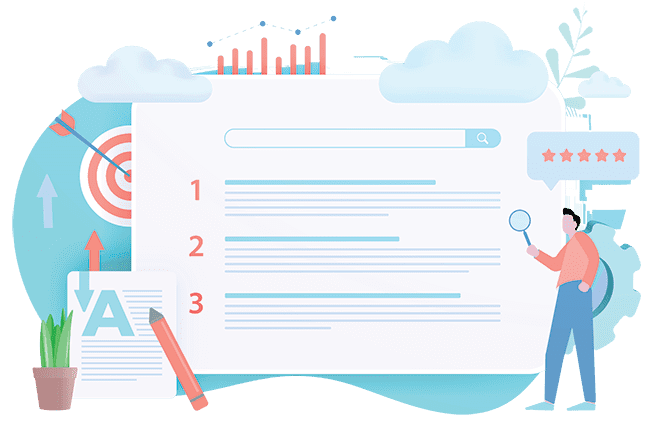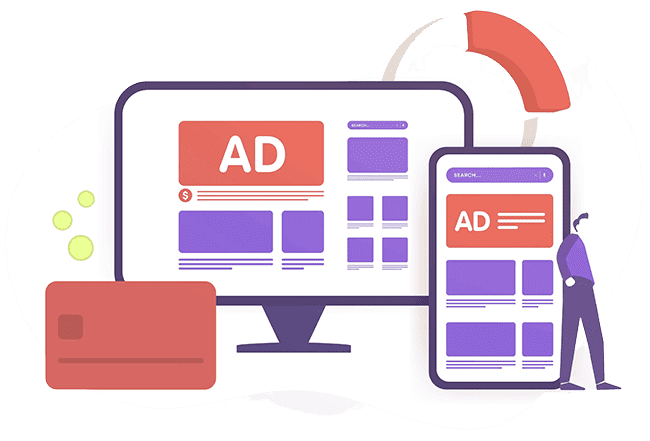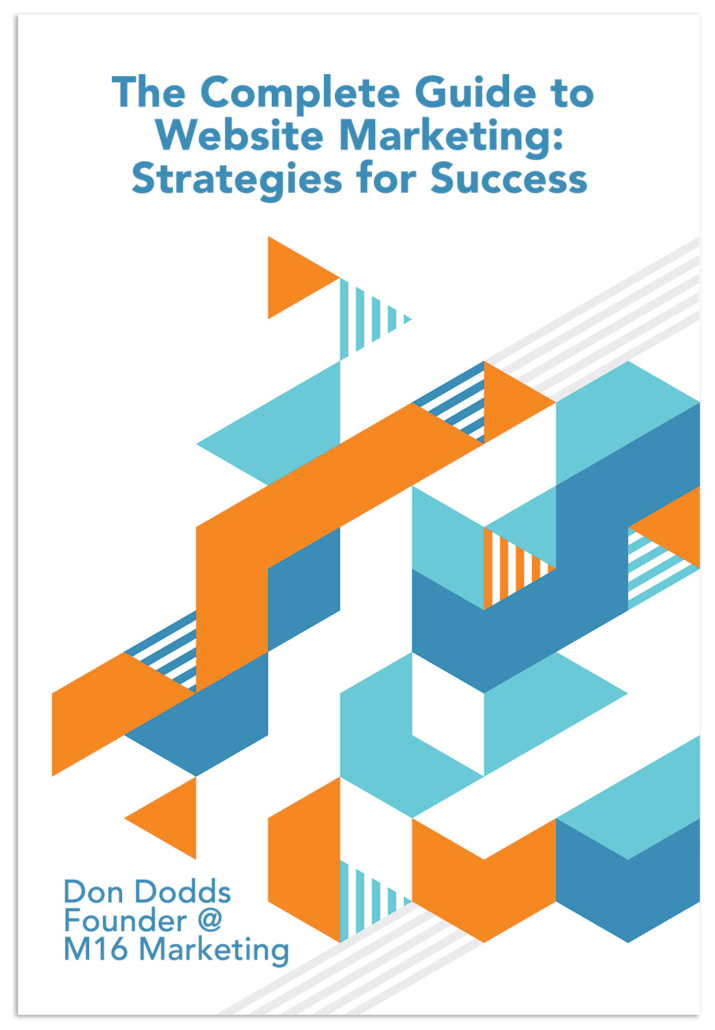Winning Website Marketing Strategies for Small Businesses
Winning Website Marketing Strategies for Small Businesses is a comprehensive guide to unlocking digital marketing success. Today, it’s no secret that the people you most want as customers are searching Google for solutions to the problems you solve. The opportunity to connect with these folks and turn them into buyers (and loyal fans) is tremendous. That’s the good news. Here’s the bad: Creating a powerful website marketing strategy can be tough.
What is a website marketing strategy?
A website marketing strategy, in its simplest form, is an action plan to achieve your business goals. Undeniably creating a strategy includes many moving parts, and much of what’s written about it is unclear or conflicting. So, if you’re feeling overwhelmed, you’re in the right place. By the end of this article, you’ll have a good basic understanding of the process required to create a solid, business-growing website marketing strategy. One that attracts, engages and converts browsers into buyers.
Potential customers are searching Google for solutions to the problems you solve. Google allows you to unlock the power of your data with interactive dashboards and reports.
The opportunity to connect with potential customers and turn them into buyers (and loyal fans) is tremendous. That’s the good news. Here’s the bad: You need a website marketing strategy and creating a powerful website marketing strategy can be tough.
7 Steps to a Powerful Website Strategy
A website marketing strategy, in its simplest form, is an action plan to achieve your business’s goals. The foundation for creating a strategy begins with SMART goals and a SWOT analysis.
Undeniably creating a strategy includes many moving parts, and much of what’s written about it is unclear or conflicting.
So, if you’re feeling overwhelmed, you’re in the right place. By the end of this article, you’ll have a good basic understanding of the process required to create a solid, business-growing website marketing strategy. One that attracts, engages and converts browsers into buyers.
Table of Contents
- Know yourself and your customer
- Evaluate your website
- Leverage the power of Google
- Create content that people love
- Be picky with social media
- Embrace email maketing
- Boost traffic with paid ads
Step 1: Research: Know Yourself and Your Customer
What do you do that makes you stand out from others selling the same or similar things? In other words, why should people choose you? What do your customers want? Why do they want it? When they search the net for what you provide, what are they hoping to find? What do they want to avoid? Think deeply about this.
 The answers to these and other questions about you and your market make it possible to plan and execute an effective website marketing strategy. Without this knowledge, whatever you do to create or improve your existing strategy may be wishful thinking. And your time is too precious for that.
The answers to these and other questions about you and your market make it possible to plan and execute an effective website marketing strategy. Without this knowledge, whatever you do to create or improve your existing strategy may be wishful thinking. And your time is too precious for that.
If you’re unsure of how to answer the above, it can be extremely helpful to talk to an objective third party. One with a solid grasp of branding and the digital marketing space.
Step 2: Audit Your Website
Time to take off the rose-colored glasses. Think back to this morning when you were searching for this, that, or the other. When you clicked a link in the search results and landed on a page, surely you had an opinion. Did you know instantly that you’d come to the right place? Could you tell from what you saw, read, and felt that this page was worth your time and attention?
Did you want to stay and explore further? Was it easy to find your way around? Did you have a sense that whoever was behind the site could be trusted? When users visit your website, you want them to answer yes to all of the above. Getting to this coveted yes requires the right combination of words, images, and, most importantly, awareness (revisit Step 1).
If you’re not sure that your site sends the right message about you, consider hiring an expert to have a good look. If they’re reputable, they’ll ask the right questions to determine what’s needed to make your website a magnet for your market. They’ll look at your site design, color psychology, how your content reads, the technology your site is built on, how your SEO stacks up against competitors, and more.
Step 3: Leverage the Power of Google
Once you’ve completed Steps 1 and 2, you can leverage the awesome power of Google to bring traffic to your door. Traffic. Is there a more beautiful word? No, but only if it’s the right kind of traffic. As we say in the biz, targeted traffic.
Targeted traffic consists of those that are likely to want what you sell. And, if you serve local customers, it includes people located in the areas you serve. For example, let’s say you sell pest control services to homeowners in Atlanta. There’s a way to set things up so that Google can send you traffic from Atlanta instead of somewhere out of your service zone.
As passionate business owners and operators, we want steady streams of targeted traffic, a website that exudes credibility, and our users to experience the upliftment that comes from sensing that we’ll keep our promises (to keep their homes pest free, to bring them more clients, and so on). Fortunately, the elements that allow us to achieve the above are the very elements that impress Google. They include …
-
The Right Keywords
To clear up some general confusion, a keyword is typically a keyword phrase. Yes, yoga retreat in Thailand a keyword. So is luxury vacation resort New Mexico. You want to put keywords in specific areas of your website to make both people and search engines say, “Ah, I’m in the right place!” That’s the short explanation. Search engine optimization (SEO) is important.To keep it simple, SEO is the art and science of driving valuable traffic, also called organic or free traffic, to your website. 24/7. In SEO, keywords are the seeds from which thriving businesses grow. It’s the language searchers speak when looking for what you sell. This is why, when it comes to driving traffic, keywords are as essential as breathing.
-
High-Quality Content
This is what your traffic comes to see. The words, images, videos, happy-customer testimonials, in short, everything you put on your site to communicate why those who find you should run, not walk, into your open arms.The list of content types is long. Articles, podcasts, videos, webinars, ebooks, and infographics make up a fraction of content possibilities. To resonate with your audience, content must address their needs thoughtfully (more on this later).
-
Optimization
Optimization refers to activities, technical and non-technical, undertaken to make your website attractive to your audience and search engines (Google, Yahoo, Bing, Baidu if you target Chinese speakers, and so on). Put another way, the purpose of optimization is to make you both desirable and findable.Imagine going through all the trouble to create a beautiful site with great, informative content. Then imagine Google and the other search engines not being able to find you when users search for what you offer. This is an important topic. Finding the right SEO Company to help you is critical. For now, just know that optimization is an essential part of a robust website marketing strategy.
-
The Right Links
Links help us to acquire the traffic we adore. But only when we understand their power. In other words, links have the power to build. But they also have the power to destroy. Simply put, some links are good at bringing us targeted traffic. Others are not so good. Others still can be downright destructive.In fact, too many of the wrong backlinks can get us banned from Google and other search engines. Learn about how to turn your website into a magnet for backlinks. A powerful website marketing strategy depends on the right backlinks.

Step 4: Create Content that People Love
In Step 3, I mentioned that your traffic is coming to see your content. This is where things get juicy. You see, the people who land on your site have hope in their hearts. They want you to win them over with high-quality content that’s easy to understand. Content that helps them find answers, solve problems and feel better.
To do this, you want to plan and create targeted (that word again) content. Here’s an example: Let’s say you’re a law firm based in Atlanta, and you work with a lot of startups. Let’s also say you know that an upcoming change in regulations will affect the startup community. This is the perfect opportunity for an article, podcast, and/or webinar designed to help your market navigate change. And … view you as the go-to source the next time they need legal help.
In addition to creating helpful, trust-building content, you’ll want to want to promote it. In other words, as great as your content may be, unless you broadcast its existence, your audience is unlikely to find it. One effective way to spread the word is to …
Step 5: Love Social Media (but be picky!)
Contrary to what many believe, you don’t need to be on every social media network to benefit from social media marketing. You want to be active on the platform (s) where your market gathers/shares information. If you’re already using social media, consider if the marketing return on investment is worth the effort you’re putting into it.

For example, if you’re currently using social media to drive traffic to your site, find out what percentage of this traffic engages with your content, reaches out to you for more information, or takes some other desired action.
If the percentages are low, you may need to look at the quality and frequency of your social media messages. You may need to assess how well the expectations they set are fulfilled when users click from them to your website. Meaning, you want these folks to have a consistently good, confidence-raising experience. Because (the old adage) people buy from those they know, like, and trust.
Step 6: Embrace the Power of email
In spite of what you may hear periodically, email is far from dead. In fact, email remains a very effective tool for building rewarding customer relationships. Routinely, it’s one of the top channels for many sectors. That is, provided you approach it considerately, with your readers’ desires in mind. In other words, when you send emails you’re entering others’ personal space, so you want to be respectful.
To put email to work for you, you’ll want to grow a list of email subscribers. One way to do this is by offering something free and helpful in exchange for an email address. For example, if you sell real estate, you can offer a free guide that simplifies the process of buying property. You can follow this up with a series of useful emails that solve common problems.

To clarify, you might send an email about property inspection that links to a more in-depth article (on your blog) on the topic. When you link compelling emails to articles that are genuinely beneficial (no fluff) and easy to understand, you can be viewed as someone trustworthy. This can make it much easier for readers to choose you when it’s time to buy.
Not sure what to write about in your emails? Make a list of questions you often receive from customers—pre- and post-sale. Your top salespeople can be a great source for this. Then, turn your answers into a steady supply of informative email content.
Step 7: Boost Traffic with Paid Ads
Why paid ads? As you may have heard, it can take several months of content creation and promotion to begin seeing results. Now, this is entirely worth the wait. Because, like compound interest, traffic generated by these methods grows exponentially. However, you may want faster results. Depending on factors like the average amount your customer spends with you, and what it costs you to acquire said customer, buying ads can pay off big time.
For example, with a platform like Google Ads, it’s not unusual to see a return on investment of several hundred percent. In addition, if you’re new to a particular market, running paid ads can help you find out quickly which keywords bring you the most traffic. Think of this as a crash course in finding keywords that are worth your investment.
Further, if you hire a trusted ppc management company to set up and manage your paid ads, they’ll keep a sharp eye on what’s working so that you can repeat it.
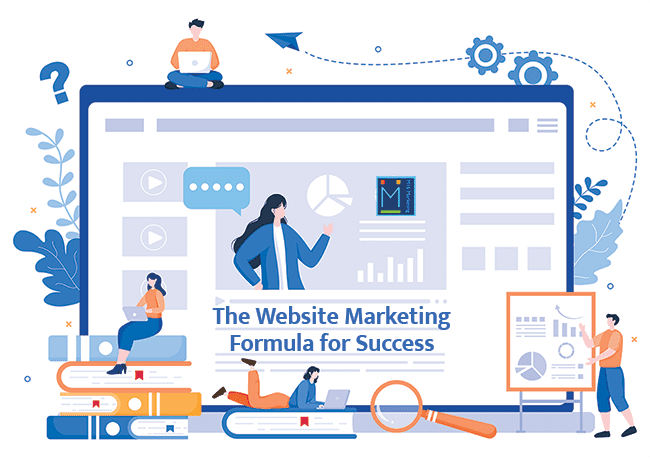
The Website Marketing Formula for Success
Creating a winning website marketing strategy begins with knowing yourself and your customers. This is an absolute must because it lays the foundation for each step that follows.
Revamping your website, optimizing it so that people are drawn to you and search engines can find you, creating content that your market loves, promoting it via social media, building your email subscriber list, and, if desired, boosting traffic with paid ads. Each step combines to create the exciting synergy that grows your business.
*NEW – The Complete Guide to Website Marketing: Strategies for Success
The Complete Guide to Website Marketing: Strategies for Success is a comprehensive resource that provides a 20-step step-by-step roadmap to help you achieve remarkable results with your online marketing efforts. Whether you’re a business owner, a marketer, or a web site owner looking to drive more traffic, generate leads, and increase conversions, this guide covers it all.
From mastering keyword research and optimizing your website for search engines to leveraging social media, content marketing, and paid advertising, this guide offers proven strategies and best practices to enhance your online presence. Discover how to create compelling content, build high-quality backlinks, optimize your website’s performance, and harness the power of analytics to monitor and refine your marketing campaigns. With practical tips, expert insights, and real-world examples, this guide equips you with the knowledge and tools needed to thrive in the competitive landscape of website marketing and achieve lasting success.

1. Master Keyword Research for Effective Website Marketing
In the world of website marketing, keyword research is essential. It’s the foundation for a successful SEO strategy, allowing you to identify the words and phrases your target audience is searching for—and ensuring that your website content and marketing efforts align with those queries. Understanding how to conduct effective keyword research is crucial to driving traffic to your site and reaching your marketing goals.
So, what exactly is keyword research? It involves using various tools to analyze and identify the search terms that your target audience is using when looking for products or services like yours. This information is then used to guide your content creation and SEO efforts to ensure that you’re optimizing your website for these specific keywords.
Here are some key steps to mastering keyword research for effective website marketing.
Start with a list of relevant topics and keywords
Begin by brainstorming a list of topics and keywords that are relevant to your business and industry. These can be general ideas that you would like to target, such as “travel” or “technology,” or more specific terms related to your products or services, such as “luxury travel” or “smartphone repair.”
Once you’ve created your initial list, you can use keyword research tools to refine and expand your ideas based on actual search data.
Use keyword research tools
There are a variety of keyword research tools available, both free and paid, that can help you identify the most effective keywords to target for your particular business and industry.
One of the most well-known and popular is Google Keyword Planner, which allows you to input your initial list of keywords and see related search terms, along with their monthly search volume and competition level.
Other tools include SEMrush, Ahrefs, and Moz Keyword Explorer, all of which offer similar features and data to help you refine your keyword list.
Analyze search volume and competition
Once you have identified a list of potential keywords using your research tools, it’s essential to analyze the search volume and competition level for each term.
Search volume refers to the number of times a particular keyword is searched for each month. You want to target keywords that have a high search volume, as these are the terms that your target audience is actively using to find businesses like yours.
However, it’s also important to consider the competition level for each keyword. Highly competitive keywords can be difficult to rank for, particularly if you’re just starting out, while lower competition keywords may present an opportunity to rank higher in search results.
Consider long-tail keywords
While general keywords are essential for attracting a wider audience, it’s also important to consider long-tail keywords. These are more specific phrases that target a particular subset of your target audience and often have lower competition levels than general keywords.
For example, instead of targeting “travel,” you might focus on “luxury travel to Europe” or “budget backpacking in Southeast Asia.” These long-tail keywords can help you rank higher in search results for more specific queries and ultimately bring more targeted traffic to your site.
Use keyword research to optimize your content
Once you’ve identified your target keywords, it’s essential to use them effectively in your website content. This means optimizing your page titles, headings, meta descriptions, and page content to include the keywords that you’ve identified.
However, it’s important to use keywords sparingly and naturally. Overusing keywords (known as “keyword stuffing”) can actually have a negative impact on your search engine rankings, as Google considers this to be an attempt to manipulate search results.
Monitor your rankings and adjust your strategy
Keyword research is an ongoing process, and it’s essential to monitor your rankings and adjust your strategy accordingly. Keep an eye on your website traffic and ranking position for your targeted keywords, and adjust your content and keyword targeting as necessary to continue driving traffic to your site.
Analyze your competition
Another important component of keyword research is analyzing your competition. This involves identifying the keywords that your competitors are ranking for and using that information to guide your own strategy.
Using tools like SEMrush or Ahrefs, you can enter your competition’s website and view the keywords that they are targeting. This can help you identify potential gaps in your own strategy and find keywords that your target audience is searching for but your competitors are not targeting.
Remember that just because your competition is ranking for a particular keyword, it doesn’t mean that you should target it too. Use your own research to determine which keywords are the best fit for your business and audience.
Use keyword research for PPC campaigns
While keyword research is often associated with SEO, it’s also a crucial component of pay-per-click (PPC) advertising campaigns. PPC advertising allows you to place ads in search results for particular search queries, and targeting the right keywords is essential to ensuring that your ads are shown to the right audience.
When creating a PPC campaign, start with your keyword research to identify the most effective keywords for your business. Use those keywords in your ad copy, landing pages, and targeting settings to ensure that your ads are shown to the right people.
Use keyword research for content marketing
Keyword research can also guide your content marketing strategy. By identifying the topics and keywords that your target audience is searching for, you can create content that is relevant and valuable to them.
Create blog posts, articles, videos, or other content that targets specific keywords and provides useful information to your audience. This will not only help drive traffic to your site but also establish your business as a thought leader in your industry.
Keep up with trends
Keyword research is an ongoing process, and it’s important to stay up-to-date with the latest trends and changes in search behavior. Use tools like Google Trends or social media monitoring tools to stay on top of what your target audience is talking about and searching for.
Pay attention to emerging trends and changes in search behavior, and adjust your keyword strategy accordingly. This will help ensure that your content and marketing efforts stay relevant and effective over time.
Wrap Up
Keyword research is an essential component of effective website marketing, guiding your SEO, PPC, and content marketing efforts. By using the right tools, analyzing search volume and competition, considering long-tail keywords, optimizing your content, monitoring your rankings, analyzing your competition, using keyword research for PPC and content marketing, and keeping up with trends, you can create a successful keyword strategy that drives traffic to your site and helps you achieve your marketing goals.
In the world of SEO, meta descriptions are often overlooked as a minor detail. However, crafting a compelling meta description is crucial in driving traffic to your website and improving your search engine rankings. In this article, we’ll explore what meta descriptions are, why they’re important, and how to craft them for SEO success.

2. Title Tag Optimization: Craft Click-Worthy Titles for Website Marketing
If you own a website, you already know how important it is to attract visitors to your site. But do you know the crucial role that title tag optimization plays in getting your site noticed? Title tags are not only essential for search engine optimization (SEO), but also for encouraging visitors to click on your site.
What are Title Tags
Title tags are HTML elements that describe the content of a web page. They appear as the clickable headline in search engine results pages (SERPs) and as the name of the tab when the page is open in a web browser. A title tag should accurately describe the content of the page, using keywords that are relevant to the topic.
Why are Title Tags Important for SEO
Title tags are one of the most important on-page SEO elements. Well-written title tags can help improve your site’s visibility and click-through rates (CTRs) in search results. They also provide a brief overview of the contents of the page and help search engines determine the topic of the page’s content.
Tips for Crafting Click-Worthy Title Tags
Here are some tips for optimizing your title tags and making them more click-worthy:
A. Keep it concise:
Title tags should be no longer than 60 characters. Longer titles may get cut off in search results, which can make the title appear incomplete or unclear. Aim for short, snappy titles that quickly convey the main topic of the page.
B. Use relevant keywords:
Use relevant keywords to describe the content of the page. This helps search engines understand the topic of your content. However, be careful not to overuse keywords. Keyword stuffing can result in penalties from search engines.
C. Make it descriptive:
The title tag should accurately and clearly describe the content of the page. Make sure that the title accurately reflects the content and provides a clear idea of what the page is about.
D. Write for humans:
While including relevant keywords is important, title tags should be written for humans and not just search engines. Titles that are too heavy on keywords can be difficult to read and can make the page appear spammy.
E. Create a sense of urgency:
Use language that creates a sense of urgency or excitement. Phrases like “Limited time offer” or “Don’t miss out!” can entice users to click on the link and visit your site.
F. Use numbers or statistics:
Including numbers or statistics in the title can help make it more compelling. For example, “10 Tips for Saving Money on Your Next Vacation” is more engaging than “Tips for Saving Money on Your Next Vacation.”
G. Use active voice:
Titles written in active voice are more engaging than those written in passive voice. Use verbs to create more energy and excitement in the title.
H. Include branding:
If appropriate, consider including your brand name in the title tag. This can help increase brand recognition and improve the chances of a click.
Examples of Effective Title Tags
To give you some inspiration, here are a few examples of effective title tags:
A. How to Boost Your Productivity: 10 Simple Habits That Work | Inc.com
This title tag is descriptive, uses numbers, and includes a sense of urgency.
B. The Best Restaurants in Dallas City | TripAdvisor
This title tag accurately describes the content of the page and includes a relevant keyword.
C. The Ultimate Guide to SEO | Hubspot
This title tag includes a sense of urgency and impactful language, while also accurately describing the content of the page.
D. 5 Tips for Writing Effective Title Tags | Moz
This title tag uses a number to make the content more actionable and descriptive, offering value to the reader.
Optimizing your title tags is a crucial part of SEO and can help improve your site’s visibility and click-through rates. By following these tips and examples, you can craft click-worthy titles that accurately describe the content of your pages, use relevant keywords, and entice users to click through to your site. Remember to always write for humans, keep it concise, and consider including a sense of urgency or other actionable tips where appropriate. By optimizing your title tags, you can improve your site’s ranking and attract more visitors to your site.

3. Write Meta Descriptions That Drive Clicks: A Guide for Website Marketing
In the world of website marketing, meta descriptions are an integral part of a website’s visibility and success. A meta description is a short snippet of text displayed on search engine result pages (SERPs) below the title tag and URL. The purpose of the meta description is to provide a brief summary of the content on a webpage and entice users to click through to that page. Writing compelling and optimized meta descriptions is crucial to driving clicks and increasing website traffic.
Keep it concise:
A meta description should be between 50-160 characters long, including spaces. The ideal length is around 155 characters. Keeping the meta description concise ensures that it will be displayed in its entirety on search engine result pages, making it easier for users to understand the content of the page and decide whether to click through to the site.
Include relevant keywords:
Relevant keywords should be included in the meta description, but do not overuse them. The use of keywords in the meta description helps search engines understand the content of the page and improves the website’s visibility in search results. It is important to use keywords in a natural and meaningful way that provides value to the user.
Focus on the user:
A well-written meta description should focus on the user and their needs. It should succinctly summarize the content of the page and provide a clear benefit of clicking through to the site. The meta description should entice the user to want to learn more about the content on the page.
Stand out from the competition:
With thousands of websites competing for clicks, it is important to make the meta description stand out from the competition. This can be done by incorporating unique selling points, such as free shipping or a limited-time offer, into the meta description.
Match the content on the page:
The meta description should accurately reflect the content on the page. Misleading meta descriptions can lead to a high bounce rate, negatively impacting the site’s search engine ranking and credibility. It is important to provide key information in the meta description that matches the content on the page.
Use action-oriented language:
Action-oriented language, such as “discover” or “learn more,” can help encourage clicks and create a sense of urgency. The meta description should communicate what the user can expect to gain from clicking through to the site, such as information or a solution to a problem.
Use proper grammar and punctuation:
A well-written meta description should use proper grammar and punctuation. A sloppy or poorly written meta description can convey unprofessionalism and reduce the likelihood of a click-through. It is essential to proofread and edit the meta description for grammar and typos.
Include a call to action:
A call to action, such as “click here” or “learn more,” can help increase the click-through rate of a meta description. The call to action should provide clear instructions on what the user can do next and what they can expect to gain from clicking through to the site.
Test and refine:
Testing and refining meta descriptions is an essential part of website optimization. A/B testing can be used to compare the effectiveness of different meta descriptions and determine which ones drive the highest click-through rate. Refining and optimizing meta descriptions based on the results of testing can increase website traffic and improve search engine ranking.
Don’t duplicate meta descriptions:
Using duplicate meta descriptions across multiple pages of a site can negatively impact the site’s search engine ranking. Each page on a site should have a unique and descriptive meta description that accurately reflects the content of the page.
Writing meta descriptions that drive clicks is a critical aspect of successful website marketing. It requires a concise and compelling summary of the page’s content that entices users to click through to the site. Focusing on the user, using relevant keywords, and incorporating unique selling points, a well-written meta description can drive clicks and increase website traffic.

4. The Power of High-Quality Content in Website Marketing and SEO
In today’s digital age, having a strong online presence is essential for businesses of all sizes. One of the most effective ways to establish a strong online presence is through website marketing and search engine optimization (SEO). High-quality content plays a critical role in the success of both website marketing and SEO.
What is High-Quality Content
High-quality content is content that is engaging, relevant, and valuable to your target audience. It should offer useful information, answer commonly asked questions, and provide solutions to problems that your audience may be facing. High-quality content should also be well-written and visually appealing, with clear headings, subheadings, and images to break up the text. It should be easy to read and understand, even for those who may not be familiar with your industry.
Why Does High-Quality Content Matter
High-quality content is essential for website marketing and SEO for several reasons. First, it helps to establish your business as an authority in your industry. By providing valuable, informative content, you demonstrate your expertise and help to build trust with your audience. This can lead to increased brand recognition, higher engagement, and ultimately, more conversions.
High-quality content is also important for SEO. Search engines like Google prioritize content that is relevant, informative, and engaging. By creating high-quality content, you increase your chances of ranking higher in search engine results pages (SERPs). This, in turn, can lead to increased traffic to your website, which can translate into more leads and sales.
The power of high-quality content is undeniable. But what makes content “high-quality”? Let’s take a closer look at some of the key characteristics of high-quality content.
The Characteristics of High-Quality Content:
A. Relevance
High-quality content is always relevant to your target audience. It should address their needs, concerns, and pain points, and should provide value to them in some way. To create relevant content, you need to understand your audience, their interests, and the challenges they face. This requires research, and may involve surveys, focus groups, or other forms of market research.
B. Originality
High-quality content is original and unique. It should offer something that hasn’t been seen or heard before, or should present a new perspective on a topic. This doesn’t mean that you can’t write about topics that have been covered before, but rather that you need to approach them in a fresh, unique way.
C. Accuracy
High-quality content is accurate and well-researched. It should be based on facts, data, and reputable sources, and should avoid making inaccurate claims or presenting misleading information. Before publishing any content, it’s essential to fact-check and verify all information to ensure that it is accurate and up-to-date.
D. Readability
High-quality content is easy to read and understand, even for those who may not be familiar with your industry. It should be well-organized, with clear headings, subheadings, and bullet points to break up the text. It should also be free of typos, grammatical errors, and other mistakes that can detract from the reader’s experience.
E. Visual Appeal
High-quality content is visually appealing, with images, infographics, and other visual elements that enhance the reader’s experience. These elements should be relevant to the content, and should help to communicate information in a clear and engaging way.
F. Engagement
High-quality content is engaging, and encourages interaction and discussion among your audience. This may involve asking questions, inviting comments and feedback, or encouraging sharing on social media. By fostering engagement, you can build a community around your content and establish a more meaningful connection with your audience.
How to Create High-Quality Content:
Creating high-quality content takes time, effort, and resources. However, the benefits of creating high-quality content can be significant, and can help to take your website marketing and SEO to the next level. Here are some tips for creating high-quality content:
A. Focus on your audience
Before creating any content, take the time to understand your audience and their needs. Conduct market research, gather feedback, and create personas to help you develop content that is relevant and valuable to your target audience.
B. Plan your content
Creating high-quality content requires planning and organization. Develop a content calendar that outlines your topics, publishing schedule, and goals. This will help you to stay on track and ensure that you are consistently creating content that is relevant and valuable to your audience.
C. Write for the web
Writing for the web is different from writing for print. When creating content for the web, it’s important to use clear, concise language, and to break up the text with headings, subheadings, and bullet points. This makes it easier for readers to scan and understand your content.
D. Incorporate visuals
Visuals can help to enhance your content and make it more engaging. Incorporate images, videos, and infographics that are relevant to your content to help communicate information in a clear and engaging way.
E. Edit and proofread
Before publishing any content, be sure to edit and proofread it for accuracy, readability, and style. This will help to ensure that your content is error-free and meets the standards of high-quality content.
F. Engage with your audience
Respond to comments, answer questions, and invite feedback to foster engagement and build a community around your content. This can help to establish your business as an authority in your industry and build trust with your audience.
High-quality content is essential for website marketing and SEO. By creating engaging, relevant, and valuable content, you can establish your business as an authority in your industry, build trust with your audience, and increase your visibility in search engine results pages. While creating high-quality content requires time, effort, and resources, the benefits can be significant, and can help to take your website marketing and SEO to the next level.

5. The Art of Keyword Placement: Elevate Your Website’s SEO Game
Are you looking to improve your website’s search engine optimization (SEO)? One important factor to consider is keyword placement. By strategically placing keywords throughout your website, you can improve your chances of ranking higher on search engines and driving more traffic to your site.
What is keyword placement?
Keyword placement refers to the practice of strategically placing keywords throughout your website to improve its relevancy to search engines. When a user searches for a particular keyword or phrase, search engines crawl the web to find pages that match that query. By using relevant keywords throughout your website’s content, you can signal to search engines that your site is a good match for those search queries.
Where should keywords be placed?
There are several places where keywords can be placed to improve your website’s SEO:
A. Page Titles:
The title of your webpage is one of the most important places to include your primary keywords. The page title appears in the search results and provides a brief description of what your webpage is about.
B. Meta Descriptions:
A meta description is a brief summary of what your webpage is about. Including primary and secondary keywords in the meta description can help improve your site’s relevancy to search engines.
C. Headers:
Header tags (H1, H2, H3, etc.) are used to structure content on your webpage and make it easier to read for users. Including keywords in your headers can help improve your site’s relevancy to search engines.
D. Body Text:
Including keywords naturally throughout your webpage’s body text can help improve your site’s relevancy to search engines. However, it’s important to avoid “keyword stuffing” – using too many keywords in an unnatural way – as this can actually hurt your site’s SEO.
E. Image Alt Tags:
Including descriptive alt tags for images on your webpage can help improve your site’s relevancy to search engines. Alt tags should include relevant keywords and accurately describe the content of the image.
How many keywords should be used?
It’s important to strike a balance between using enough keywords to improve your site’s SEO, but not so many that it becomes obvious or unnatural. There is no set number of keywords that should be used, but a general rule of thumb is to include your primary keyword at least once in the page title, meta description, headers, and body text. Additional keywords can be included throughout the content, but only if they are relevant and used in a natural way that enhances the user’s experience.
What are some best practices for keyword placement?
To make the most of your keyword placement strategy, consider these best practices:
A. Focus on primary keywords:
Choose one or two primary keywords that best describe the content of your webpage and use them strategically throughout your content.
B. Use secondary keywords sparingly:
Secondary keywords can be used to provide additional context and relevance to your webpage, but should not be overused.
C. Know your audience:
Choose keywords based on what your target audience is searching for. Conducting keyword research can help you identify relevant keywords and phrases to target.
D. Use keywords naturally:
Avoid using keywords in an unnatural way that disrupts the flow of content or makes it difficult to read. Use keywords in a way that enhances the user’s experience and provides value.
E. Consider user intent:
Think about the intent of the user searching for your keywords and tailor your content to meet their needs. This can help improve your site’s relevancy to search engines and drive more targeted traffic to your site.
Keyword placement is an important part of any effective SEO strategy. By strategically placing keywords throughout your website, you can improve its relevancy to search engines and drive more targeted traffic to your site. However, it’s important to use keywords in a natural and strategic way that enhances the user’s experience. By following best practices for keyword placement, you can elevate your website’s SEO game and improve your chances of ranking higher on search engines.

6. The Power of Linking: Harness Internal and External Links for Website Marketing
As a website owner, you want to attract more traffic to your site and increase your search engine rankings. One effective way to achieve these goals is by harnessing the power of linking, both internally within your website and externally with other high-authority websites.
Internal linking involves linking to other pages on your own website, while external linking involves linking to pages on other websites.
Why Internal Linking is Important
Internal linking is an important aspect of on-page optimization that can help search engines understand the content and structure of your site. By linking to other pages on your website, you help search engines discover and index these pages more easily.
In addition to helping search engines understand your site’s structure, internal linking can also improve your website’s usability. By providing links to related content, you make it easier for users to navigate to relevant pages on your site, potentially increasing the time they spend on your site and reducing bounce rates.
Internal linking can also help to distribute link equity throughout your website. Link equity is the value that search engines assign to a page based on the number and quality of links it receives. By strategically linking to pages throughout your site, you can help to distribute this equity more evenly, potentially boosting the rankings of all the pages on your site.
Tips for Effective Internal Linking
To harness the power of internal linking, consider the following tips:
A. Create a Site Map
A site map is a blueprint of your website that shows the hierarchical structure of your pages. By creating a site map, you can ensure that all pages on your website are linked to and easily discoverable by search engines.
B. Have a Clear Navigation Structure
Your website should have a clear and logical navigation structure. This means organizing your pages into categories and subcategories and linking to them from a main navigation menu. A clear navigation structure can help users and search engines understand the content and organization of your site.
C. Use Descriptive Anchor Text
Anchor text is the text that is used to create a hyperlink. It’s important to use descriptive and relevant anchor text when linking to other pages on your website. This helps users and search engines understand the content of the page that is being linked to.
D. Prioritize Pages with High Link Equity
Pages with high link equity are those that receive a lot of links from other high-authority pages. You can boost the rankings of other pages on your site by linking to them from these high-link-equity pages.
E. Use a Logical Linking Structure
It’s important to create a logical linking structure to guide users and search engines through your site. This means linking to related pages in a clear and organized way, so that users can easily navigate between them.
Why External Linking is Important
External linking involves linking to other high-authority websites from your own site. While it may seem counterintuitive to link to other sites from your own, external linking can actually have many benefits for your website’s SEO.
Firstly, external linking can help to establish your website as a resource for high-quality information. If your website provides valuable information and links to other trusted sources, search engines may view your site as more authoritative and rank it higher in search results.
External linking can also help to attract more traffic to your website. If visitors follow links from your site to other high-quality sites, they may be more likely to return to your site in the future.
Tips for Effective External Linking
To harness the power of external linking, consider the following tips:
A. Link to High-Authority Websites
When linking to external sites, it’s important to choose credible and authoritative sources. Look for websites that are relevant to your content and have high domain authority scores.
B. Use Descriptive Anchor Text
Just like with internal linking, it’s important to use descriptive and relevant anchor text when linking to external sites. This helps users and search engines understand the content of the page that is being linked to.
C. Avoid Link Farms
Link farms are groups of websites that agree to link to each other in order to increase their link equity. However, this is a frowned-upon practice that can result in penalties from search engines. Instead, focus on building organic and natural links to high-quality external websites.
D. Monitor Your Links
It’s important to monitor the links on your site and ensure that they are working properly. Broken or outdated links can harm your website’s reputation and rankings.
Linking, both internally and externally, is a powerful way to improve your website’s SEO and attract more traffic to your site. By following the tips outlined in this article, you can effectively harness the power of linking and achieve greater success in search engine rankings.
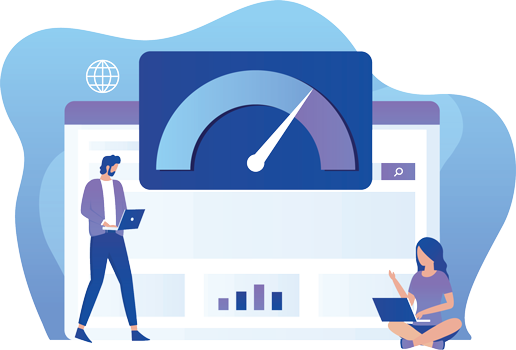
7. Speed Matters: How Mobile-Friendly and Fast Loading Websites Impact Website Marketing
In today’s fast-paced digital age, website speed and mobile-friendliness have become critical factors in website marketing. A website that loads quickly and is mobile-friendly can improve user experience, increase engagement, and boost search engine rankings.
Why website speed matters in website marketing
Website speed is an essential factor in website marketing because it impacts the user experience. A slow-loading website can frustrate users and cause them to leave the site before they even see what your business has to offer. In fact, research shows that if a page takes longer than three seconds to load, 40% of users will abandon it.
Not only does website speed impact user experience, but it also influences search engine rankings. Google and other search engines factor in website speed when determining where to rank a website in search results. If your website is slow, it will likely rank lower than faster sites, even if the content is excellent.
Another reason why website speed matters in website marketing is that it can impact conversion rates. A fast-loading website can increase the chances of users converting into customers. According to research, a one-second delay in website load time can result in a 7% reduction in conversions.
How to improve website speed
There are several ways to improve website speed, including:
A. Optimize images:
Large images can slow down website load times. To optimize images, you can compress them, reduce their dimensions, or use a content delivery network (CDN) to speed up image delivery.
B. Minimize HTTP requests:
A page that requires multiple HTTP requests to load can slow down the website. To minimize HTTP requests, you can combine files, reduce the number of plugins and scripts, and use CSS sprites.
C. Enable browser caching:
Caching allows frequently accessed resources to be stored on the user’s device, reducing the need to download them on each visit. Enabling browser caching can improve website speed and user experience.
D. Use a content delivery network:
A content delivery network (CDN) is a network of servers that are located around the world and used to deliver content to users based on their geographic location. Using a CDN can improve website speed by reducing the distance between the user and the server.
E. Choose the right hosting provider:
The hosting provider you choose can impact website speed. Choose a hosting provider that offers fast server response times, uptime guarantees, and quality support.
Why mobile-friendliness matters in website marketing
Mobile-friendliness is another critical factor in website marketing. With more than 50% of internet traffic coming from mobile devices, it’s essential to have a website that is mobile-friendly. A mobile-friendly website is one that is optimized for a smaller screen and touch-based navigation.
Mobile-friendliness impacts website marketing in several ways. First, a mobile-friendly website can improve the user experience. If a website is not optimized for mobile devices, users may have to pinch and zoom to see the content, which can be frustrating and lead to a high bounce rate.
Second, mobile-friendliness impacts search engine rankings. Google has indicated that mobile-friendliness is a ranking factor, and websites that are not optimized for mobile devices may rank lower in search results.
Third, mobile-friendliness can impact conversion rates. According to research, 61% of users are unlikely to return to a mobile site that they had trouble accessing, and 40% will go to a competitor’s website instead.
How to optimize for mobile
To optimize your website for mobile devices, you can take several steps, including:
A. Use responsive design:
Responsive design is a design method that allows a website to adapt to different screen sizes. Using responsive design ensures that your website looks good and functions correctly on any device.
B. Optimize images:
Just like with website speed, optimizing images is critical for mobile-friendly websites.
C. Use mobile-friendly fonts:
Fonts that are too small or difficult to read on mobile devices can impact user experience. Choose fonts that are readable on smaller screens.
D. Simplify navigation:
Navigation on a mobile device should be simple and easy to use. Use a clear and obvious menu, and make sure that buttons and links are easy to tap on a small screen.
E. Test your website on mobile devices:
Testing your website on a mobile device is critical to ensure that it looks and functions correctly. Test your website on a variety of devices and browsers to make sure that it works correctly for all users.
Website speed and mobile-friendliness are critical factors in website marketing. A fast-loading and mobile-friendly website can improve user experience, boost search engine rankings, and increase conversion rates. By optimizing your website for speed and mobile devices, you can ensure that your website is delivering the best possible user experience and attracting and retaining customers.

8. Build Connections: How User Engagement Drives Website Marketing Success
Building connections with your audience is critical to the success of your website marketing efforts. One of the most effective ways to build connections is through user engagement. User engagement signals are the metrics that measure how users interact with your website.
What is User Engagement
User engagement is an umbrella term that refers to the different ways that users interact with your website. This can include actions such as clicking on links, filling out forms, watching videos, or leaving comments. The more engaged users are with your website, the more likely they are to spend time on your site, share your content, and potentially make a purchase.
How User Engagement Drives Website Marketing Success
User engagement is critical to the success of your website marketing efforts. When users engage with your website, it helps build connections and trust with your brand. This can result in increased website traffic, improved search engine rankings, and higher conversion rates.
A. Improved Search Engine Rankings
User engagement signals are now an important factor in search engine rankings. Google’s algorithm takes into account user engagement metrics such as time on site, bounce rate, and pages per session when determining the relevance and quality of a website. By improving user engagement, you can improve your website’s search engine rankings, which can drive more traffic to your site.
B. Increased Conversion Rates
When users are engaged with your website, they are more likely to make a purchase or complete a desired action. For example, if a user spends more time on your product page, watches a video about your product, and reads customer reviews, they are more likely to make a purchase. By improving user engagement, you can increase your conversion rates and ultimately drive more revenue.
C. Enhanced Brand Awareness
User engagement is an effective way to build brand awareness. When users engage with your website, they are more likely to remember your brand and share your content with others. This can result in increased visibility and awareness for your brand, which can lead to more website traffic and potentially more sales.
User Engagement Signals to Watch For
There are several user engagement signals that you should pay attention to when tracking the effectiveness of your website marketing efforts:
A. Bounce Rate
Bounce rate is the percentage of users who leave your website after viewing only one page. A high bounce rate is a strong indication that users are not engaging with your website. A low bounce rate, on the other hand, suggests that users are finding the content on your site valuable and are more likely to continue engaging with your brand.
B. Time on Site
Time on site measures how much time users are spending on your website. The longer users stay on your site, the more likely they are to be engaged with your content. If users are only spending a few seconds on your site, it may indicate that your content is not engaging or relevant to their needs.
C. Pages per Session
Pages per session is a metric that measures how many pages users are viewing during a single visit to your website. A higher number of pages per session suggests that users are exploring your website and finding value in your content.
D. Click-Through Rate
Click-through rate (CTR) measures the percentage of users who click on a link on your website to go to another page. A higher CTR suggests that users are engaged with your content and are interested in learning more about your brand.
E. Social Shares
Social shares measure the number of times your content is shared on social media platforms like Facebook, Twitter, and LinkedIn. Social shares are an indicator of how engaging your content is and how likely users are to recommend your brand to others.
Tips for Improving User Engagement Signals
Improving user engagement signals takes time and effort, but it’s worth the investment. Here are some tips for improving user engagement on your website:
A. Create Engaging Content
Creating engaging content is critical to improving user engagement. Your content should be relevant, interesting, and valuable to your target audience. Consider using visuals like images and videos to make your content more engaging and appealing.
B. Improve Site Navigation
User-friendly navigation is important for keeping users engaged with your website. Make sure your site is easy to navigate, and that users can quickly find the information they are looking for. Clear calls-to-action can also help guide users through your site and encourage them to engage with your content.
C. Optimize Your Site for Speed
A slow-loading website can be frustrating for users and can lead to a high bounce rate. Make sure your site is optimized for speed by minimizing large image files and optimizing code. A fast-loading site can improve user engagement and ultimately drive more traffic to your site.
D. Use Personalization
Personalizing your website content can help increase user engagement by creating a more personalized experience for each user. Consider using tools like pop-ups or chatbots to provide personalized content or recommendations based on users’ previous interactions with your website.
E. Respond to User Feedback
Responding to user feedback is an effective way to build connections and trust with your audience. Encourage users to leave feedback and respond to comments and questions promptly. This can help improve user engagement and encourage users to return to your site in the future.
Overall, user engagement is critical to the success of your website marketing efforts. Paying attention to user engagement signals and taking steps to improve engagement can drive more traffic to your site, increase conversion rates, and build lasting connections with your audience.

9. Going Viral: Master Social Sharing for Effective Website Marketing
When done correctly, social sharing and going viral is easier said than done. In this article, we’ll explore some tips and tricks for mastering social sharing to boost your website’s success.
What is social sharing
Social sharing refers to the act of sharing content, such as blog posts, infographics, videos, or images on social media platforms, including Facebook, Twitter, Instagram, LinkedIn, and Pinterest. Social sharing can help to increase the visibility of your brand and website, as well as driving traffic by attracting new visitors.
Why is social sharing important for website marketing?
Social sharing is crucial for website marketing because it allows businesses to reach their target audience. Most people today spend a significant amount of time on social media platforms, so having a strong social media presence can help to increase your brand’s visibility, expand your reach, and drive traffic to your website. Effective social sharing can also help to build your brand’s reputation and generate buzz around your content, leading to an increase in engagement, leads, and sales.
Tips for mastering social sharing
A. Create shareable content
The first step to mastering social sharing is to create shareable content. This means creating content that is not only interesting and informative but also visually appealing, easy to read, and engaging. Consider using visuals, including images, infographics, and videos, to make your content more shareable.
B. Optimize your content for social media
When sharing content on social media platforms, it’s important to optimize your content for each channel. This means adjusting the size and type of images and videos you use to fit each platform’s specifications. It’s also important to use relevant hashtags and to tag relevant accounts to help increase your content’s visibility.
C. Use attention-grabbing headlines
Creating attention-grabbing headlines is crucial for mastering social sharing. Your headline should be short, snappy, and attention-grabbing, and should accurately convey the content of your post. Be sure to use keywords relevant to your content to help improve your search rankings.
D. Determine the best time to post
Determining the best time to post your content can make a significant difference in its success. Different audiences are active on social media at different times, so it’s important to research and identify the best times to post your content. Consider using social media scheduling tools, like Hootsuite or Buffer, to schedule your posts to go out at the optimal times.
E. Engage with your audience
Engaging with your audience is an essential part of mastering social sharing. Responding to comments and messages allows you to build rapport with your audience and foster a sense of community around your brand. It’s also important to share other content relevant to your industry to help build trust and authority with your audience.
F. Use paid advertising
While organic social sharing is important, it can be difficult to achieve without a large following. Using paid advertising on social media platforms can help to increase your content’s visibility and reach a wider audience. Consider using targeting options to reach your specific target audience and to place your ads where they are most likely to be seen.
G. Monitor and analyze your results
Monitoring and analyzing your social sharing results is critical to understanding what is working and what isn’t. Use social media analytics tools like Google Analytics or Hootsuite to track metrics like page views, engagement, and conversions, and adjust your strategy accordingly.
Mastering social sharing is crucial for effective website marketing. By creating shareable content, optimizing it for social media, using attention-grabbing headlines, determining the best time to post, engaging with your audience, using paid advertising, and monitoring and analyzing your results, you can help improve your content’s visibility, attract new leads, and increase sales. Remember to stay consistent, be creative, and remain engaged with your audience to achieve social sharing success.

10. Keep Content Fresh: The Importance of Regular Updates in Website Marketing
With millions of websites competing for attention, it’s crucial to keep your website content fresh and up-to-date. Regular updates not only help keep your website relevant, but they also play a critical role in improving your search engine rankings. In this article, we’ll explore the importance of regular updates in website marketing and how they can impact your online success.
What are Regular Updates
Before we dive into the specifics of why regular updates are so important, let’s define what we mean by “regular updates.” Essentially, regular updates refer to ongoing changes and improvements to your website content. This can include blog posts, articles, product descriptions, images, video content, and more. The goal of regular updates is to ensure that your website stays fresh, relevant, and engaging for your target audience.
Why are Regular Updates Important
There are several reasons why regular updates are essential for website marketing success. Let’s take a closer look at some of the most critical factors:
A. Boost Your Search Engine Rankings:
One of the most significant benefits of regular updates to your website is that it can help boost your search engine rankings. When search engines crawl your site, they look for fresh, relevant, and useful content. By regularly updating your website, you’re providing search engines with new and relevant information that can improve your rankings. Additionally, every new piece of content gives you an opportunity to include important keywords and phrases that can help improve your visibility on search engine results pages (SERPs).
B. Improve User Experience:
Website users today are looking for engaging and fresh content that provides value and entertainment. Regular updates show users that your website is alive and active while also providing them with a reason to return. A lack of updates can drive users away from your site, resulting in higher bounce rates, fewer page views, and potentially lost revenue.
C. Establish Industry Authority:
By providing regular updates to your website, you can establish authority in your industry. Adding new content that provides insight, education, or entertainment will help position you as a thought leader in your industry, build trust with your audience and provide value to your customers.
D. Increase Shareability:
Fresh content is more likely to be shared by your audience, expanding your reach and visibility. If you’re providing value to your audience via regular updates, they’ll be more likely to share your content through their own social media accounts or word of mouth. This, in turn, can drive more traffic to your website and improve your brand awareness.
E. Attract Return Visitors:
Regularly updating your website will encourage return visits from your audience, increasing the chances of converting visitors into customers. When users see that you are creating fresh and relevant content, they are more likely to return to your site to see what’s new. This can help cultivate a loyal audience that is more likely to engage with your brand, often resulting in improved conversion rates.
Tips for Keeping Your Website Content Fresh
With the importance of regular updates in mind, here are some tips to help you keep your website content fresh and engaging:
A. Create a Content Calendar:
One of the simplest but most effective ways to ensure regular updates is to create a content calendar. This calendar should include dates for new blog posts, product updates, and other relevant content. This simple step will help you stay organized and ensure that you publish new content regularly.
B. Repurpose Existing Content:
Don’t be afraid to repurpose existing content to create new pieces. For example, you could turn a blog post into a video or create an infographic based on an existing article. This approach not only saves time but also ensures that you’re leveraging your existing content to create fresh content.
C. Focus on Quality:
It’s not just about publishing new content – it’s about publishing high-quality new content. Take the time to research and write well-crafted articles that provide value and insights to your target audience.
D. Use Multiple Formats:
Don’t just rely on text-based content. Incorporating other formats like video, images, and podcasts can help make your website more engaging and keep your audience coming back for more.
E. Use Keywords:
Make sure to include relevant keywords when creating new content. This will help improve your search engine rankings and attract the right audience to your site.
F. Closely Monitor Site Analytics:
Take the time to monitor your site’s analytics to see what types of content are performing well and what isn’t. This information can help you make more informed decisions about the types of content you create and publish.
Regular updates are an essential part of any business’s website marketing strategy. By regularly updating your website, you can boost your search engine rankings, improve user experience, establish industry authority, increase shareability, and attract return visitors. With these tips in mind, you can start creating a content strategy that ensures your website stays fresh and engaging for your target audience. Remember, in today’s digital landscape, the only constant is change – so make sure your website is keeping up.

11. Visual Impact: Enhance Website Marketing with Multimedia Content
As technology continues to evolve, online marketing strategies are also constantly changing. One effective way to enhance website marketing is through the use of multimedia content. Multimedia content refers to any content that combines different forms of media, such as text, images, video, and audio.
Why Use Multimedia Content on Websites
One of the primary reasons to use multimedia content on websites is to increase engagement and interest. By combining different forms of media, websites can offer a more immersive experience to users. This can lead to increased website traffic, longer time spent on the site, and ultimately, more conversions.
Additionally, multimedia content can help convey information in a more engaging and memorable way. Studies have shown that people retain information better when it is presented in a visual or auditory format. By using multimedia content, websites can communicate information more effectively, leading to higher retention rates.
Another benefit of using multimedia content is that it can improve search engine optimization (SEO). Search engines like Google prioritize websites that have a mix of different types of media content. By using multimedia content on your website, you can improve your website’s search engine ranking, making it more visible to potential customers.
Types of Multimedia Content
There are several types of multimedia content that can be used on websites. Some of the most popular include:
A. Images:
Images are a simple and effective way to enhance website design and convey information. They are particularly useful for visualizing data or breaking up long sections of text.
B. Videos:
Videos are an increasingly popular way to engage website visitors. They can be used to demonstrate products, provide tutorials, or simply provide entertainment.
C. Infographics:
Infographics are another way to visualize data and statistics. They can be used to tell a story or highlight key information in a visually appealing way.
D. Podcasts:
Podcasts are an audio medium that can be used to share information or tell stories. They can be particularly useful for providing in-depth information and establishing thought leadership.
E. Animations:
Animations can be used to add motion and interactivity to a website. They can be used to demonstrate products or processes, or simply add visual interest.
Using Multimedia Content for Website Marketing
Now that we’ve discussed the benefits of multimedia content, let’s explore how it can be used for website marketing.
A. Use High-Quality Images and Videos
One of the most important things to keep in mind when using multimedia content on websites is to use high-quality images and videos. Low-quality media can negatively impact the user experience and reflect poorly on your brand. Additionally, using high-quality content can increase engagement and improve the perception of your brand.
B. Optimize Multimedia Content for SEO
To maximize the SEO benefits of multimedia content, it is important to optimize it for search engines. This can be done by including relevant keywords in image and video titles and descriptions. Additionally, adding captions and alt text to images can help search engines understand the content of the media.
C. Use Multimedia Content for Social Media Marketing
Multimedia content can also be used for social media marketing. Visual content is more likely to be shared on social media and can help increase brand visibility. Additionally, incorporating multimedia content into social media posts can improve engagement and encourage followers to interact with the brand.
D. Use Multimedia Content for Email Marketing
Email marketing is another area where multimedia content can be effective. Including images or videos in email campaigns can increase engagement and improve click-through rates. Additionally, it can help make email content more visually appealing and memorable.
E. Create Interactive Multimedia Content
Interactive multimedia content, such as quizzes or games, can be particularly effective at engaging website visitors. This type of content encourages users to interact with the brand and can help create a more memorable experience. Additionally, interactive multimedia content can help increase time spent on the website, leading to higher conversion rates.
Incorporating multimedia content into website marketing strategies can have a significant impact on engagement and conversions. By using a mix of different types of media, websites can create a more immersive experience for users and improve the perception of the brand. Additionally, multimedia content can improve search engine ranking and be used for social media and email marketing. By considering the benefits of using multimedia content and incorporating it into your website marketing strategy, you can improve your online presence and increase brand visibility.

12. URLs That Rank: Strategies for Optimizing URL Structure in Website Marketing
In today’s digital age, website marketing has become an essential aspect of any business. With millions of websites competing for users’ attention, it’s important to ensure that your website is optimized for SEO. One often-overlooked aspect of website optimization is the URL structure.
What is URL Structure
URL stands for Uniform Resource Locator and is the web address that users type into their browser to access a website. The structure of a URL is made up of several components, including the protocol (HTTP, HTTPS), the domain name (www.example.com), and the path to the specific page or resource on the website (www.example.com/products/shoes).
Why is URL Structure Important for SEO
URL structure is important for SEO because search engines use it as a way to understand a website’s hierarchy and the content of individual pages. A well-structured URL can provide valuable context for search engines and make it easier for them to crawl and index your site. This can result in better overall visibility in search engine results pages (SERPs) and drive more traffic to your website.
Strategies for Optimizing URL Structure
A. Keep URLs Short and Descriptive
Short, descriptive URLs are easier for users and search engines to understand. Avoid using long, convoluted URLs that include unnecessary characters or numbers. Instead, use simple, descriptive words that accurately convey the content of the page.
For example, instead of using a URL like:
www.example.com/products/category1/subcategory2/productid123456
Use a URL like:
www.example.com/products/blue-sneakers
B. Include Target Keywords in the URL
Including target keywords in the URL can help improve search engine visibility for specific searches. Be sure to include top-level keywords in the domain name and specific keywords in the path. However, be careful not to overuse keywords or risk being penalized by search engines for keyword stuffing.
For example, instead of using a URL like:
www.example.com/products/sneakers
Use a URL like:
www.example.com/products/red-sneakers-for-men
C. Use Hyphens to Separate Words
When creating URLs, it’s important to use hyphens to separate words instead of underscores or other characters. Hyphens are easier for search engines to identify and separate words, making the URL more readable and understandable.
For example, instead of using a URL like:
www.example.com/products/mens_sneakers
Use a URL like:
www.example.com/products/men-sneakers
D. Avoid Dates and Numbers in URLs
Avoid using dates and numbers in URLs unless they are essential to the content of the page. Dates and numbers can make URLs appear outdated and less relevant, which can negatively impact search engine rankings. Instead, focus on using descriptive words and phrases to convey the content of the page.
For example, instead of using a URL like:
www.example.com/products/sneakers-2020
Use a URL like:
www.example.com/products/best-sneakers-for-running
E. Use Canonical URLs to Avoid Duplicate Content
Duplicate content can negatively impact search engine rankings, so it’s important to use canonical URLs to avoid duplication. A canonical URL is the preferred version of a page’s URL that search engines should index. By using canonical URLs, you can consolidate duplicate content and ensure that search engines rank the correct version of the page.
F. Implement Redirects for Changed or Broken URLs
If you change the URL of a page or a URL goes broken, it’s important to implement redirects to avoid losing any SEO value associated with the old URL. Redirects can also improve user experience by automatically directing users to the correct page when they click on a broken or outdated URL.
G. Use a Logical Hierarchy for Site Structure
When creating URLs, it’s important to use a logical hierarchy that accurately reflects the structure of your website. This can make it easier for search engines to understand the relationship between different pages and improve overall search engine visibility. Use broad, parent categories at the top level and more specific subcategories at lower levels to create a clear hierarchy.
For example, a logical URL hierarchy for a shoe retailer might look like:
www.example.com/products/
www.example.com/products/men-shoes/
www.example.com/products/men-shoes/sneakers/
Ensuring that your URLs are short, descriptive, and keyword-rich can improve your website’s visibility in search engine results pages and drive more traffic to your site. Remember to keep URLs simple and easy to understand, and use redirects and canonical URLs to avoid duplicate content and ensure that users and search engines are directed to the correct page.

13. Headlines that Matter: Maximize Impact with Optimized Heading Tags in Website Marketing
Headlines are the first thing that your website visitors see when they land on your webpage. It’s the first communication point that captures their attention and informs them about the content of your website. Therefore, it’s essential to have optimized heading tags to maximize impact in website marketing.
What are Optimized Heading Tags
Heading tags are HTML elements used to define headings and subheadings on a website. They range from H1 to H6, with H1 being the highest level of heading and H6 being the lowest. The use of heading tags is not only practical for the reader when scanning the content, but it also provides search engines with valuable information about your website content.
Optimized heading tags are headings that have been strategically placed, written in a clear and concise way, and optimized with relevant keywords related to your website’s content. Optimized heading tags help your website achieve a higher ranking in search engine result pages (SERPs) and make it easier for visitors to navigate through your content.
Why are Optimized Heading Tags Important for SEO
Optimized heading tags are crucial for search engine optimization (SEO) because they communicate the subject matter of your website to search engines like Google and Bing. Search engines use algorithms to crawl and index websites and optimized heading tags help them determine the relevancy of your website for a specific search query.
When you have optimized heading tags, you’re signaling to search engines that your content is relevant and valuable to the search query and improving your chances of ranking higher in SERPs. In addition, optimized heading tags can also improve the user experience of your website by making it easier for visitors to scan and understand your content.
How to Optimize Heading Tags for Maximum Impact
A. Use H1 Heading Tag on the First Page Element
The H1 heading tag should be used for the title of your webpage, making it the first page element that search engines crawl and index. The H1 tag should include the target keyword that reflects the content of the webpage.
B. Use H2 Tags for Main Sections
Use H2 tags for the main sections of your webpage, making it easier for visitors to identify the structure of your content. Include relevant keywords in each of the H2 tags, as they will help search engines determine the content of each section.
C. Use H3 and H4 Tags for Subsections and Details
Use H3 and H4 tags for subsections and details within the main sections of your webpage. This will help visitors quickly scan and digest the content, while also providing search engines with additional information about the relevancy of your content.
D. Avoid Over-Optimization
While optimizing your heading tags is essential, you should avoid over-optimization and keyword stuffing. Only use relevant keywords that accurately reflect the content of your webpage. Over-optimization can result in a penalty from search engines and actually harm your rankings.
E. Make Them Clear and Concise
Your heading tags should be clear and concise, describing the content of the section they’re associated with. Avoid using generic or vague language and use active voice to make them more engaging.
F. Make Them Engaging
Make your heading tags engaging to catch the attention of your visitors. Use humor, intrigue, or curiosity to pique their interest and encourage them to continue reading.
G. Use Alt Tags for Images
Alt tags are used to describe images on your website, making them more accessible to people with disabilities and helping search engines understand the content of the image. Including relevant keywords in your alt tags can also help with your SEO.
H. Prioritize Text Over Images
Even though images can add visual appeal to your website, text is still the most important content for search engines. Make sure that you prioritize text on your website over images, using images to supplement the text rather than replace it.
Optimized heading tags are an essential component of SEO and website marketing. They help search engines and visitors easily understand the structure and relevance of your content, making it easier for them to navigate through your website. By following these tips and strategies, you can optimize your heading tags and boost your SEO ranking, ultimately increasing traffic and conversions on your website.
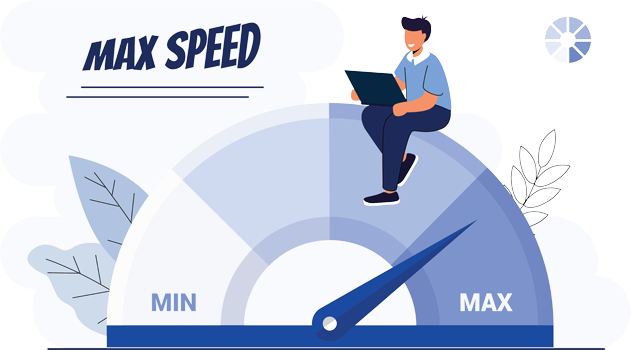
14. Faster is Better: Unlock the Benefits of Improved Page Load Speed for Website Marketing
In today’s fast-paced world, people expect websites to load quickly. In fact, a slow page load speed can have a negative impact on user experience, search engine rankings, and ultimately, revenue. We will explore the benefits of improving page load speed for website marketing and provide tips on how to improve it.
Why Is Page Load Speed Important for Website Marketing
There are several reasons why page load speed is important for website marketing, including:
A. User experience:
A fast-loading website provides a positive user experience. Visitors are more likely to stay on your site and interact with it if they don’t have to wait for pages to load.
B. Search engine rankings:
Page load speed is a factor that search engines consider when ranking websites. A slow-loading site may be viewed as less reliable and less useful, which can hurt your search engine rankings.
C. Conversion rates:
A faster website can lead to higher conversion rates. Visitors are more likely to fill out a form, make a purchase, or take other desired actions if the website loads quickly.
D. Mobile optimization:
Mobile users tend to have slower internet connections, which means that page load speed is even more important for mobile optimization.
How to Improve Page Load Speed
Improving page load speed doesn’t have to be a complicated process. Here are some tips to help you speed up your site:
A. Optimize Images:
Large image files can slow down your site. Reduce file sizes by compressing images before uploading them to your website.
B. Use a Content Delivery Network (CDN):
A CDN can help improve page load speed by distributing your website’s content across multiple servers. This reduces the time it takes for your site to load.
C. Minimize HTTP Requests:
Each element on a webpage, including images, scripts, and style sheets, requires a separate HTTP request. Minimize the number of HTTP requests by combining multiple images into one file and using CSS sprites.
D. Use Browser Caching:
Browser caching allows website elements to load faster by storing frequently accessed data on the user’s computer. This means the user doesn’t have to download the same information each time they visit the site.
E. Minimize Redirects:
Redirects can slow down your website by requiring additional HTTP requests. Minimize redirects by linking to content directly and avoiding unnecessary redirects.
F. Reduce Server Response Time:
Server response time is the amount of time it takes for your server to respond to a user’s request. Reduce server response time by choosing a high-quality hosting provider and minimizing the use of server-side scripts.
G. Enable Gzip Compression:
Enabling gzip compression can reduce the size of your website’s files, which can speed up page load time. Many web servers and content management systems support gzip compression out of the box.
H. Minimize JavaScript and CSS:
Minimize the use of JavaScript and CSS on your site. Large amounts of JavaScript and CSS can slow down page load speed. Use only what is necessary for your website’s functionality.
I. Use Lazy Loading:
Lazy loading is a technique for loading images and other content only when it’s needed. This helps reduce page load time, especially for websites with lots of images.
J. Test Your Website’s Page Load Speed:
Regularly test your website’s page load speed with tools such as Google PageSpeed Insights or GTmetrix. These tools will give you insight into which aspects of your site are slowing it down, so you can take steps to improve speed.
Improving page load speed is crucial for website marketing success. By optimizing your site for speed, you can improve user experience, boost search engine rankings, increase conversion rates, and ultimately, generate more revenue. Use the tips outlined in this article to improve your website’s page load speed and enjoy the benefits of a faster, more efficient website.

15. Schema Markup Demystified: Elevate Your Website Marketing Strategy
Schema markup is a powerful tool that can help your website stand out in search engine results and attract more traffic. But what is schema markup, and how can you use it to improve your website’s marketing strategy?
What is Schema Markup
Schema markup is a form of microdata that can be added to a website’s HTML code to provide additional context to search engines about the content on the page. This context can include information about the type of content, such as whether it is a product, a person, a recipe, or an event. It can also include other important details, such as the location, the date, and the author.
Schema markup uses a standardized vocabulary that has been developed by a collaboration between major search engines like Google, Bing, and Yahoo. This vocabulary is known as Schema.org, and it includes a wide variety of types of content and contexts that can be used to provide additional context to search engines.
Why Use Schema Markup
Using schema markup can provide several benefits to your website’s marketing strategy. Some of the key benefits include:
Improved visibility in search engine results pages (SERPs): By providing additional context to search engines about the content on your website, schema markup can help your website stand out in search engine results pages. This can be especially important for local businesses, as schema markup can help you appear in local search results.
Increased click-through rates (CTR): By providing more detailed information about your content in search engine results pages, schema markup can help attract more clicks to your website. This can be especially important for e-commerce websites, as schema markup can help your products stand out in search engine results.
Improved user experience: By providing additional context to search engines about the content on your website, schema markup can help improve the user experience by making it easier for users to find the information they’re looking for.
How to Implement Schema Markup
Implementing schema markup on your website can be a complex process, but it is not impossible. Here are the basic steps that you will need to follow:
Step 1: Choose the type of schema markup you want to use
The first step in implementing schema markup is to choose the type of schema markup that you want to use. There are many different types of schema markup available, including:
– Article
– Event
– Product
– Recipe
– Review
– Local Business
– Organization
Each type of schema markup has its own set of properties that can be used to provide additional context to search engines about the content on your website. You will need to choose the type of schema markup that best fits your content.
Step 2: Add the schema markup to your website’s HTML code
Once you have chosen the type of schema markup that you want to use, you will need to add the markup to your website’s HTML code. This can be done manually by adding the appropriate tags to the HTML code, or by using a plugin or tool that can generate the markup for you.
Step 3: Test your schema markup
After adding the schema markup to your website, you will need to test it to make sure that it is working correctly. There are several tools available that can be used to test your schema markup, including Google’s Structured Data Testing Tool and Schema.org’s RDFa Play.
Step 4: Monitor your results
Finally, after implementing schema markup on your website, it’s important to monitor your results to see if there are any improvements in your search engine rankings or click-through rates. Be patient, as it may take some time to see the full benefits of schema markup.
Tips for Using Schema Markup to Elevate Your Website’s Marketing Strategy
Now that you understand the basics of schema markup and how to implement it on your website, here are some tips for using schema markup to elevate your website’s marketing strategy:
A. Focus on local schema markup
If you run a local business, focusing on local schema markup can be one of the most effective ways to use schema markup to improve your website’s visibility in local search results. Local schema markup can include information about your business’s address, phone number, and hours of operation.
B. Use schema markup for reviews
If your website features reviews of products, services, or businesses, using schema markup for reviews can help your reviews stand out in search engine results pages. Review schema markup can include information about the rating, the number of reviews, and the author of the review.
C. Implement schema markup for videos
If your website features videos, implementing schema markup for videos can help your videos appear in Google’s video search results. Video schema markup can include information about the title, description, and duration of the video.
D. Use schema markup for events
If your website features events, using schema markup for events can help your events appear in Google’s events search results. Event schema markup can include information about the date, time, location, and description of the event.
E. Use schema markup for recipes
If your website features recipes, using schema markup for recipes can help your recipes stand out in search engine results pages. Recipe schema markup can include information about the ingredients, the preparation time, and the cooking time.
By providing additional context to search engines about the content on your website, schema markup can help you stand out in search engine results pages, attract more traffic, and improve the user experience. By following the tips outlined in this article, you can use schema markup to take your website’s marketing strategy to the next level.

16. Dominating the Local Market: How to Optimize Your Website Marketing for Local SEO
If you’re a small business owner, dominating the local market is crucial for staying competitive and growing your customer base. One effective way to do this is by optimizing your website for local SEO.
Local SEO involves optimizing your website and online presence to improve your visibility in local search results. When someone searches for a local service or product, Google and other search engines use a variety of factors to determine which businesses to display in the search results. By improving your local SEO, you can increase the likelihood of your business appearing at the top of the search results, making it easier for potential customers to find your business.
Here are some tips on how to optimize your website marketing for local SEO:
A. Claim and Verify Your Google My Business Listing
Google My Business is a free tool that allows business owners to manage their online presence across Google, including search and Maps. By claiming and verifying your Google My Business listing, you can ensure that your business information is accurate and up-to-date, and that you are appearing in local search results. Make sure to include important information, such as your business name, address, phone number, website URL, and business hours.
B. Optimize Your Website with Local Keywords
One of the most important factors in local SEO is using relevant keywords on your website. Make sure to include local keywords on your website, such as the name of your city, town, or region. For example, if you’re a plumber in Dallas City, make sure to include phrases such as “plumber in Dallas City” or “emergency plumber in NYC” throughout your website. This helps search engines understand what your website is about and improves your chances of ranking higher in local search results.
C. Create High-Quality, Localized Content
Creating high-quality, localized content can help your website rank higher in local search results. One effective way to do this is by creating blog posts, articles, or videos that are focused on local topics or events. For example, if you own a restaurant, you could create content about the best local food festivals in your city or share recipes featuring local ingredients. This not only helps improve your local SEO but also establishes your business as an authority in your local community.
D. Get Listed on Local Directories
Listing your business on local directories, such as Yelp, TripAdvisor, and Yellow Pages, can help improve your local SEO. Make sure to claim and verify your listings and ensure that your business information is accurate and consistent across all platforms. Having consistent, accurate information on these directories improves your chances of appearing in local search results and can increase your online visibility.
E. Use Location-Specific Meta Tags
Adding location-specific meta tags to your website can also improve your local SEO. Meta tags are snippets of HTML code that provide information about your website to search engines. By including location-specific meta tags, such as the name of your city or town, you can signal to search engines that your website is relevant for local searches.
F. Get Involved in Local Community Events
Getting involved in local community events, such as charity drives, festivals, or sponsorships, can help improve your local SEO. When you participate in local events, you can get valuable exposure for your business and build relationships with other local businesses and residents. This can lead to backlinks to your website, social media shares, and improved online visibility.
G. Encourage Customer Reviews
Encouraging customers to leave reviews of your business on Google, Yelp, or other review websites can also help improve your local SEO. Positive reviews not only improve your online reputation but also improve your chances of appearing in local search results. Make sure to respond to all reviews, whether positive or negative, and engage with your customers to show that you care about their feedback.
Optimizing your website marketing for local SEO is an effective way for small businesses to dominate their local market. By claiming and verifying your Google My Business listing, using local keywords, creating localized content, getting listed on local directories, using location-specific meta tags, getting involved in local community events, and encouraging customer reviews, you can improve your online visibility and increase your chances of appearing at the top of local search results.
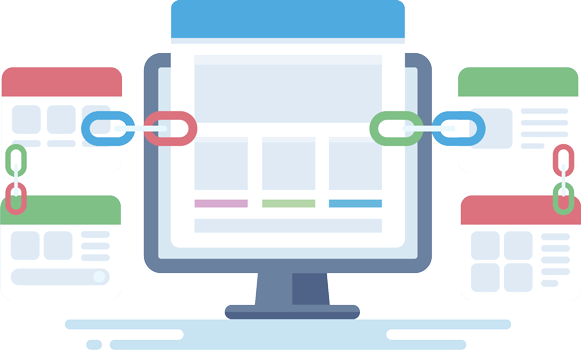
17. The Art of Link Acquisition: Building High-Quality Backlinks for Effective Website Marketing
In the world of digital marketing, backlinks are a crucial component of any successful SEO strategy. Building high-quality backlinks to your website can help improve your search engine rankings, drive more traffic to your site, and increase your brand’s visibility. But building quality backlinks can be challenging, especially in today’s crowded online marketplace.
What Are Backlinks?
A backlink is a link from another website that points to your site. Search engines use backlinks as a way to determine the authority and relevance of a website. The more high-quality backlinks a site has, the more likely it is to rank higher in search results. But not all backlinks are created equal. Backlinks from low-quality, spammy sites can actually harm your site’s rankings. Building high-quality backlinks is crucial for effective website marketing.
Why Are Backlinks Important for Website Marketing
Backlinks are important for website marketing for several reasons. First, they help search engines understand the relevance of a site. If a high-quality site links to your site, it signals to search engines that your content is valuable and relevant. This can help improve your search engine rankings.
Second, backlinks drive traffic to your site. When a user clicks on a backlink and visits your site, you have the opportunity to convert them into a customer or subscriber. Backlinks from relevant, high-quality sites are more likely to drive targeted traffic to your site, improving the chances of conversion.
Third, building high-quality backlinks can improve your brand’s visibility and reputation. When your site is linked to from relevant, authoritative sites, it signals to users that your brand is trustworthy and respected within your industry.
How to Build High-Quality Backlinks
Building high-quality backlinks is an art, and it takes time and effort to do well. Here are some tips for building high-quality backlinks to your site:
A. Create High-Quality Content
The first step in building backlinks is to create high-quality, valuable content on your site. Content that offers unique insights, solves problems, or provides value to your audience is more likely to be shared and linked to by others. Before you start building backlinks, make sure your site has valuable, engaging content that users will want to link to and share.
B. Conduct Outreach
One of the most effective ways to build backlinks is to conduct outreach to relevant, authoritative sites in your industry. Start by identifying sites that are relevant to your niche and have a high domain authority. Then, reach out to the site owners or editors with a personalized email that explains why your content would be valuable to their audience. Be sure to include a link to your content in the email.
C. Guest Blogging
Another effective way to build backlinks is through guest blogging. Guest blogging involves writing an article for another site in your industry and including a link back to your site in the article. Look for high-authority, relevant sites that accept guest posts and pitch them on a topic that you’re knowledgeable about. Make sure the blog post offers value to their audience and is not overly promotional.
D. Broken Link Building
Another effective way to build backlinks is through broken link building. Broken link building involves finding broken links on other sites and offering a relevant replacement link to the site owner. Look for high-authority sites in your industry that have broken links and offer a relevant replacement link to your own content.
E. Social Media Marketing
Social media can be an effective tool for building backlinks. Share your content on social media platforms and engage with influencers in your industry. If your content is valuable, it may be shared and linked to by others, improving your site’s search engine rankings.
F. Create Infographics
Infographics are a popular type of content that are highly shareable and linkable. Create high-quality infographics that provide valuable insights or data and share them on social media and relevant sites in your industry. Be sure to include a link back to your site in the infographic to drive traffic and improve your site’s search engine rankings.
G. Analyze Competitor Backlinks
Analyzing your competitor’s backlinks can be an effective way to identify potential link-building opportunities for your own site. Use a tool like Ahrefs to analyze your competitor’s backlink profile and identify high-authority sites that link to their site. Then, reach out to those sites and offer a link to your own high-quality content.
Creating high-quality content, conducting outreach to relevant sites, and engaging in broken link building and social media marketing can improve your site’s search engine rankings, drive targeted traffic, and establish your brand as an authority in your industry. The art of link acquisition takes time and effort, but by following these tips, you can build a strong backlink profile that will benefit your site for years to come.

18. Harness the Power of Data: Monitoring and Analyzing Website Marketing Performance
Monitoring and analyzing website marketing performance is essential for businesses seeking to succeed in online marketing. The ability to analyze data can help you gain valuable insights into your website’s traffic and user behavior, allowing you to make data-driven decisions that can drive conversions and boost your ROI.
Why Monitor and Analyze Your Website’s Marketing Performance
Monitoring and analyzing your website’s marketing performance can provide you with valuable insights into how your website is performing. By looking at different metrics, you can gain a better understanding of your website’s traffic, user behavior and engagement. These insights can then be used to make data-driven decisions that can help you to optimize your website, improve user experience and increase your conversions.
Improved Website Performance
Analyzing your website’s marketing performance can help you identify areas where your website is underperforming. By tracking metrics such as bounce rate, time on page, and conversion rate, you can identify user behavior patterns and identify areas for improvement. For example, if you notice that most users are leaving your website on a particular page, it may indicate that the page needs to be optimized to improve engagement and time spent on site.
Increased Conversion Rates
Monitoring and analyzing your website’s marketing performance can help identify areas where you can optimize your website to increase conversions. By tracking metrics such as click-through rate, conversion rate, and bounce rate, you can identify areas where you’re losing valuable traffic and optimize your website accordingly. This can include improving calls to action, optimizing landing pages, and optimizing your website’s design to improve user experience.
Better Understanding of Your Customers
Analyzing your website’s marketing performance can provide you with valuable insights into your customers’ behavior and preferences. By tracking metrics such as average session duration, the number of pages viewed per session, and bounce rate, you can gain a better understanding of how users are engaging with your website and what content is resonating with them. This insight can be used to create more targeted and effective marketing campaigns, improve user engagement, and increase conversions.
Improved Return on Investment
Monitoring and analyzing your website’s marketing performance can help you determine which marketing campaigns are providing the best return on investment. By tracking metrics such as conversion rate, cost-per-click, and cost-per-conversion, you can identify which campaigns are driving the most conversions and adjust your marketing strategy accordingly. This can help to improve your ROI for your marketing spend and ensure that you’re getting the most value from your marketing budget.
Tips for Monitoring and Analyzing Your Website’s Marketing Performance
Now that we’ve explored the benefits of monitoring and analyzing your website’s marketing performance let’s dive into some tips on how to do it effectively.
Define Your Metrics
The first step in monitoring and analyzing your website’s marketing performance is to define your metrics. You’ll need to determine which metrics are most important to your business and align with your overall marketing goals. Some common metrics include:
– Traffic:
Monitor the number of visitors to your website, how they arrived, and the average time spent on your site.
– Bounce Rate:
Monitor the percentage of visits to your site that result in a user leaving before exploring other areas of your website.
– Conversion Rate:
Monitor the percentage of visitors that convert on your site.
– Session Duration:
Monitor the length of time users spend on your site page or pages.
– Cost-per-click:
Monitor the cost of each click on your paid advertising campaigns.
Once you’ve defined your metrics, use an analytics tool such as Google Analytics to track and monitor them over time.
Set Realistic Goals
Once you’ve defined your metrics, it’s important to set realistic goals for each. This will help you to measure your progress over time and identify areas where you need to make improvements. For example, if your goal is to increase conversions by 10%, you can track your progress and adjust your marketing strategy accordingly. Remember to set goals that are specific, measurable, attainable, relevant, and time-bound.
Track Your Competitors
Monitoring and analyzing your competitors can also provide valuable insights into your website’s marketing performance. By tracking your competitors’ metrics, you can identify areas where you’re underperforming and develop strategies to improve your website. Look at the keywords and phrases your competitors are targeting, their content strategy, and their social media activity to identify areas where you can improve your own marketing efforts.
Use A/B Testing
A/B testing can be an effective way to optimize your website for conversions. By testing different versions of your website, you can identify which elements are driving the most conversions and optimize your site accordingly. For example, you can test different headlines, images, and calls to action to identify the best-performing elements.
Invest in Paid Advertising
Investing in paid advertising can help you to boost your website’s traffic and conversions. You can use platforms such as Google Ads, Facebook Ads, and Instagram Ads to target specific audiences with your messaging and drive more traffic to your site. Monitoring and analyzing your paid advertising campaigns can help you to identify which campaigns are driving the most conversions and adjust your strategy accordingly.
Monitor Your Social Media Engagement
Social media is an important component of any digital marketing strategy. You can use platforms such as Facebook, Twitter, and LinkedIn to engage with your target audience and drive more traffic to your website. Monitoring and analyzing your social media engagement can help you to identify which social media channels are driving the most traffic to your site and adjust your social media strategy accordingly.
Defining your metrics, setting realistic goals, tracking your competitors, investing in paid advertising, and monitoring your social media engagement can gain valuable insights into your website’s traffic and user behavior and make data-driven decisions that can improve your website’s performance and increase your ROI. So go ahead and get started today – harness the power of data for your business and watch as it takes your marketing to new heights.

19. The Social Media Advantage: Amplify Your Website Marketing with Effective Promotion
Social media has become a powerhouse platform and a vital tool for businesses to drive traffic, generate leads, and boost conversions.
What is Social Media Promotion
Social media promotion refers to the process of utilizing social media platforms to promote your website content to your target audience. It involves creating and sharing engaging and compelling content that is designed to drive traffic to your website, generate leads, and boost conversions.
The Importance of Social Media Promotion
Social media promotion has become a necessity for businesses looking to thrive in today’s digital age. Here are some reasons why social media promotion is crucial for your website:
A. Increased Visibility
Social media platforms have millions of active users, which means that your content will reach a broader audience when shared on social media. Social media promotion allows you to reach new users who may not be aware of your website and increase visibility for your brand.
B. Higher Engagement
Social media is a highly engaging platform that allows users to interact with your content through likes, comments, shares, and more. Engaging with your audience through social media promotion can lead to higher engagement rates, which can translate into increased website traffic, leads, and conversions.
C. Cost-Effective
Social media promotion is a cost-effective way to reach a large audience. Most social media platforms offer free registration, and running social media promotion campaigns can be done with minimal investment.
D. Improved SEO
Social media promotion can help boost your search engine rankings by driving traffic to your website. Increased traffic to your website signals search engines that your content is valuable, which may result in higher search engine rankings.
E. Brand Building
Social media promotion can help build your brand by creating a more significant presence on social media platforms. Consistent promotion and engagement can lead to increased brand recognition, loyalty, and advocacy.
Effective Social Media Promotion Strategies
Now that we have established the importance of social media promotion let’s dive into some effective social media promotion strategies.
A. Develop a Social Media Strategy
The first step to an effective social media promotion is to develop a social media strategy. This strategy should be aligned with your overall digital marketing goals and objectives and should include a plan for each social media platform you wish to use. The strategy should also define your target audience, the types of content you will share, and how often you will share it.
B. Choose the Right Social Media Platforms
There are numerous social media platforms available today, each with its unique audience, features, and functionalities. It is essential to choose the right social media platforms based on your target audience, niche, and content type. The most popular platforms for social media promotion include Facebook, Twitter, LinkedIn, Instagram, and Pinterest.
C. Create Engaging Content
Creating engaging content is pivotal to social media promotion success. Your content should be visually appealing, easy to read, and invoke emotions. It’s essential to create diverse content types, including text, images, videos, and infographics.
D. Optimize Content for Each Platform
Each social media platform has its unique features and functionalities, and it’s imperative to optimize your content for each platform you use. For instance, Twitter’s 240-character limit requires you to be concise, while Instagram’s visual aspect may require you to use high-quality images.
E. Utilize Hashtags
Hashtags are a great way to increase the visibility of your content by helping users discover your content. Research relevant keywords for your industry and use them in your hashtags to attract more users to your content.
F. Promote Your Social Media Accounts
Promoting your social media accounts across all your channels can increase your followers, resulting in increased engagement. Be sure to include social media icons on your website, email signatures, and other relevant channels.
G. Engage with Your Audience
Social media promotion is a two-way street that requires you to engage with your audience actively. Respond to comments, answer questions, and engage in conversations to foster a relationship with your audience.
Developing a social media strategy, choosing the right platforms, creating engaging content, optimizing content for each platform, utilizing hashtags, promoting your social media accounts, and engaging with your audience can enhance your social media promotion efforts and achieve your digital marketing goals and objectives.
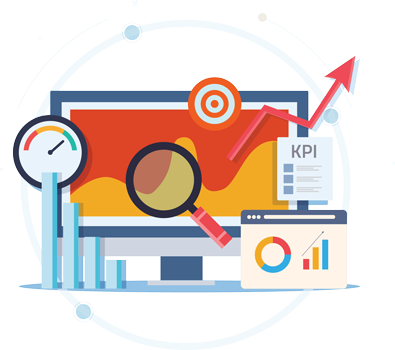
20. The Competitive Edge: Why Staying Updated Gives Your Website Marketing an Advantage
Having a website is no longer optional for businesses. It’s a critical part of your brand’s identity and a key way to connect with potential customers. However, simply having a website is not enough. To stay ahead of the competition, you need to stay updated with the latest trends and strategies in website marketing.
The digital landscape is constantly evolving, and what worked yesterday may not work today. Google’s algorithms are constantly changing, social media platforms are introducing new features, and consumer behavior is always shifting. To keep up with these changes, it’s essential to stay updated with the latest trends and strategies in website marketing.
Staying updated can give your business a competitive edge in several ways. First, it can help you stay ahead of the curve when it comes to search engine optimization (SEO). SEO is the practice of optimizing your website to rank higher in search engine results pages (SERPs), and it’s a critical part of a successful website marketing strategy.
However, Google’s algorithms are constantly changing, and what worked yesterday may not work today. Staying updated with the latest SEO trends and strategies can help ensure that your website stays at the top of the search engine rankings. For example, in 2019, Google introduced BERT, a new algorithm that focuses on natural language processing. By staying updated with this change, businesses can update their website content to be more conversational and natural, which can help boost their SEO rankings.
Staying updated with the latest website marketing trends can also help you provide a better user experience for your customers. One of the biggest trends in website marketing is the shift towards mobile-first design. With more and more consumers accessing websites via mobile devices, having a website that is optimized for mobile devices can make a big difference in your business’s success.
By staying updated with mobile-first design trends, businesses can ensure that their website is optimized for all devices, from desktops to smartphones. This can help improve the user experience for customers and make it easier for them to navigate your website and find the information they need.
Another trend in website marketing is the rise of video content. Video is a highly engaging and effective way to communicate with customers, and businesses that incorporate video into their website marketing strategy can see significant benefits. By staying updated with the latest video marketing trends, businesses can create high-quality videos that resonate with their target audience and help drive conversions.
In addition to staying updated with the latest trends and strategies in website marketing, it’s also important to take a proactive approach to website security. With cyber-attacks on the rise, businesses need to prioritize website security to protect their data and their customer’s information.
By staying updated with the latest website security trends and best practices, businesses can ensure that their website is protected from potential threats. This can help instill trust in customers and help businesses build a strong reputation for security and reliability.
Finally, staying updated with the latest website marketing trends and best practices can help businesses save time and money. By staying ahead of the curve, businesses can avoid investing in outdated strategies that may not yield results. Instead, they can focus on strategies that are proven to drive results and that align with their business goals.


